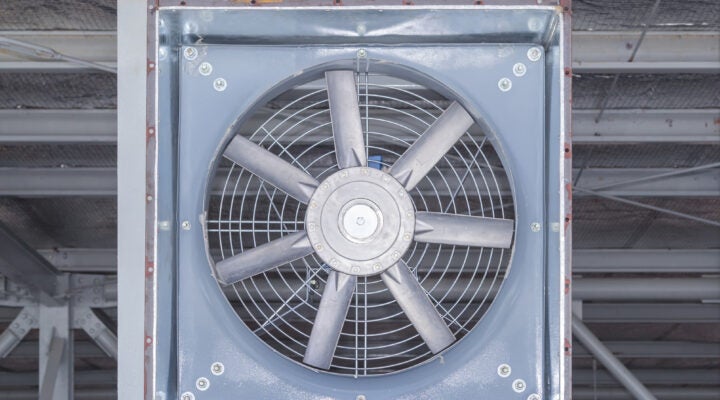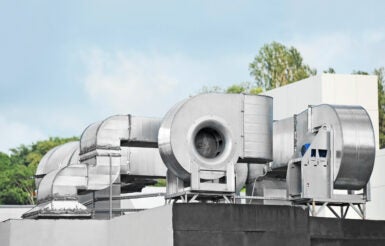Understand the Fan Energy Index
Highly efficient fans are versatile and ideal for a variety of installations. They can be used in new commercial and industrial building projects to meet stringent energy codes or to address specific needs based on the intended purpose of the facility. They are also an option in retrofit projects where space, existing ductwork, or legacy system constraints require flexible solutions.
Understanding the Fan Energy Index (FEI) will help determine the more efficient fan option for a project. This comprehensive metric changes with airflow and pressure, allowing engineers, specifiers, buyers, installers, and maintenance staff to identify and select fans based on energy consumption. The higher the index number, the lower the fan’s energy consumption at a given duty point.
Duty point refers to the specific fan operating conditions such as required airflow at a given pressure or temperature, at which FEI is calculated using a manufacturer’s selection software. FEI is also a wire-to-air metric, which means it accounts for the combined efficiency of all the components of the fan system—motor, controller, and drive—not just the impeller.
FEI replaces previously used metrics, and was incorporated into the American Society of Heating, Refrigeration and Air-Conditioning Engineers (ASHRAE) fan-efficiency provision (ASHRAE 90.1) in 2019. In 2021, the metric was also adopted by the International Energy Conservation Code, and is standard used across many states, including California, Montana, Oregon, and Washington.
Key takeaways: In addition to emphasizing energy efficiency and savings, FEI ensures the increased performance of a specific fan. It allows for more flexibility in meeting operational needs where there may be variability between the design and the actual fit, form, and functionality of the fan once installed. It is important to note that a fan’s FEI is not static; it may change depending on the duty points specified. The same fan can perform very efficiently (a high FEI) at certain conditions, while also performing very inefficiently (a low FEI) at a different duty point.
Additional resources
Read the other parts of the 5 Things You Should Know Before Selecting an Efficient Fan series:



